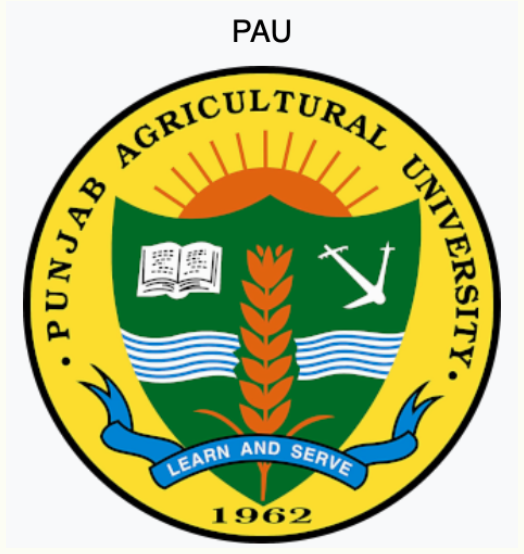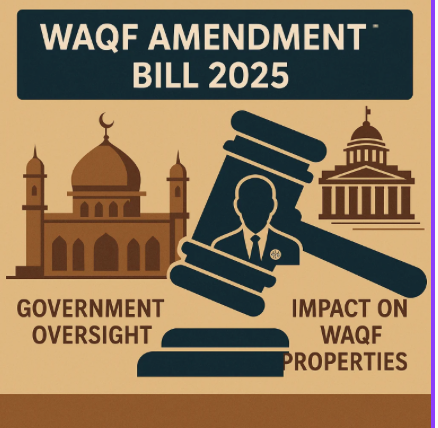Daily Current Affairs | April 2 2025
Important Topics from Current Affairs : 1) India-USA Trade Deal 2) India-Chile Relations 3) Rice Cultivation & Climate Change 4) WAQF Bill Debate
Jumbo IAS
4/2/20255 min read
1) India-USA Trade Deal
India-US trade relations involve ongoing negotiations due to tariff barriers and market access restrictions.
Current negotiations focus on a Bilateral Trade Agreement (BTA) where India may lower tariffs on US goods in exchange for trade concessions.
India agreed to Terms of Reference (ToR) for the BTA after PMO intervention. The ToR provides a negotiation framework requiring high-level approval.


Background
2018: US imposed higher tariffs on steel and aluminium; India retaliated with tariffs on 28 US products.
2019: US removed India from the Generalized System of Preferences (GSP), citing inequitable market access.
US announced reciprocal tariffs under Trump's trade policy, effective April 2.
Implications of US-India Trade Dispute
Economic Impact :
Lower tariffs benefit US businesses but may hurt Indian industries.
Continuation of tariffs could escalate trade tensions.
Geopolitical Impact :
China Factor: US wants stronger India ties to counter China.
Atmanirbhar Bharat vs. Globalization: India must balance self-reliance with foreign trade partnerships.
Market Reaction : April 1, 2025: Indian stock market declines over tariff fears.
USTR Criticism Against India
Agricultural & Food Trade Barriers :
India mandates non-GM and animal-free feed for imported dairy, which the US deems "non-scientific."
US criticises India's import restrictions as "opaque and unpredictable."
Intellectual Property (IP) Issues: India on ‘Priority Watch List’ due to weak trade secret protections & slow patent approvals.
Medical Device Price Caps: India’s price controls on coronary stents and knee implants discourage US firms.
Data Localization: RBI mandates that foreign payment firms store transaction data within India, complicating US operations.
Payment Services Restrictions: Visa, Mastercard face hurdles due to exclusive data storage requirements.
Satellite & Telecom Market Access: US seeks fewer regulatory hurdles for companies like Starlink to operate in India.
USTR Criticism Against India
US demands favor American corporations at the cost of India's food security, small industries, and cultural values.
India supports fair trade but insists on reciprocal and sovereignty-respecting agreements.
2) India-Chile Relations
India-Chile signed a Preferential Trade Agreement (PTA) in 2006, expanded in 2017.
Both countries are now negotiating Comprehensive Economic Partnership Agreement (CEPA) to replace PTA with a broader framework covering goods, services, and investment.
Expected benefits: Market access, trade diversification, investment protection, and critical mineral supply chain stability.


Importance of Chile
Bilateral trade (2022-23): $2.64 billion; India imports copper, lithium, minerals and exports of Pharma, automobiles, textiles.
Chile is India’s third-largest trading partner in Latin America after Brazil and Mexico.
Gateway to Antarctica: PM Modi highlighted Chile’s strategic role due to Punta Arenas, a key departure point for Antarctic research.
Critical Minerals Supply: Chile is a leading producer of copper and lithium, crucial for EVs and renewable energy.
Other Areas of Cooperation
Agriculture - India can contribute expertise in irrigation and digital farming, while Chile offers fruit and wine exports.
Security Cooperation - Joint efforts against drug trafficking, terrorism, cybersecurity, and possible arms trade. With special focus on defence industrial manufacturing.
Infrastructure - India’s expertise lies in digital public infrastructure, renewable energy, railways, space technology. This could allow Indian firms to expand in Latin America’s infrastructure sector.
Geopolitical Cooperation - UNSC reforms, climate action, South-South cooperation, multilateral trade strengthening.
Culture - Bollywood’s rising popularity in Chile strengthens people-to-people ties. Also, collaboration is possible in areas like Yoga, Ayurveda, tourism, and cuisine promotion.
About Chile
Chile, a long, narrow country in western South America, stretches from the Andes Mountains to the Pacific Ocean.
It's bordered by Peru and Bolivia to the north, Argentina to the east, and the Pacific Ocean to the west.
The country features the Andes Mountains to the east, the Pacific Ocean to the west, and a variety of landscapes including deserts, plains, and glaciers.
Capital: Santiago; Language: Spanish.
Economy: Chile is known for its copper and other mineral resources, as well as its wine industry.
Political Stability: Chile is considered one of South America's more stable and prosperous nations.
3) Rice Cultivation & Climate Change
Recently, a report was published by Punjab Agricultural University, Ludhiana named “Rice Cultivation: A Contributor to Climate Change in Indian Punjab".
The study draws a connection between rice cultivation in Punjab and Climate Change.


Significance
Punjab's Role: Major contributor to India’s food security, especially wheat and rice.
Green Revolution (1960s): Boosted rice production but caused environmental stress.
Study Focus: Examines climate impact of Punjab’s large-scale rice cultivation.
Key Highlights of the Report
Rising Rice Cultivation and Temperature Increase :
Rice acreage: 70% of Punjab’s central plains; lower in maize, vegetable, and cotton-growing regions.
Temperature rise: 3.7°C increase in Ludhiana (1970–2020); 0.6°C in Bathinda; 0.1°C in Nawanshahar.
Cause: Water retention in paddy fields leads to warmer nights, reducing diurnal temperature variation.
Altered Monsoon Patterns :
Pre-2000: Monsoon lasted 77 days.
Post-2000: Extended by 0.8 days/year; reached 118 days in 2021.
Rainfall decline: 6 mm per year drop; below normal in 18 out of 21 years (2000–2020).
Cause: Excess moisture from rice fields disrupts rainfall patterns.
Increased GHG Emissions : Methane (CH₄) and Nitrous Oxide (N₂O): Generated in waterlogged paddy fields, intensifying warming.
Groundwater Depletion : Over-extraction depleting water tables which threaten Punjab’s agricultural sustainability.
4) WAQF Bill Debate
The Lok Sabha passed the Waqf (Amendment) Bill 2025 which amends Waqf Act, 1995.
The House also gave approval to the Mussalman Wakf (Repeal) Bill 2024 which repeals Mussalman Wakf Act 1923.
Purpose - Address loopholes, regulate Waqf properties, and improve dispute resolution.
Opposition concerns - Potential government interference in Muslim religious affairs.


Key Features
Property Classification - District Collector (not Waqf Tribunal) to determine Waqf status. Disputed properties treated as government land until resolved.
Survey - Survey Commissioner replaced with District Collector/Deputy Collector for better efficiency.
Representation in WAQF Boards - Non-Muslim CEO and 2 non-Muslim members proposed.
Proposal to remove Section 107, allowing adverse possession claims on encroached Waqf land.
Opposition Concerns
Government interference in religious affairs and property classification.
Legalization of land encroachment through Limitation Act changes.
Politicization of Waqf governance through forced non-Muslim representation.
Power of DC to Classify WAQF land - Risk of misclassification and government overreach.
Survey of WAQF Properties - Centralized power may compromise fairness.
Govt’s Arguments
Need for digital listing of Waqf properties to improve transparency.
Curbing misuse of Waqf by use, where properties have been declared Waqf without formal endowments.
Bringing expertise and accountability to Waqf Boards through non-Muslim representation.


